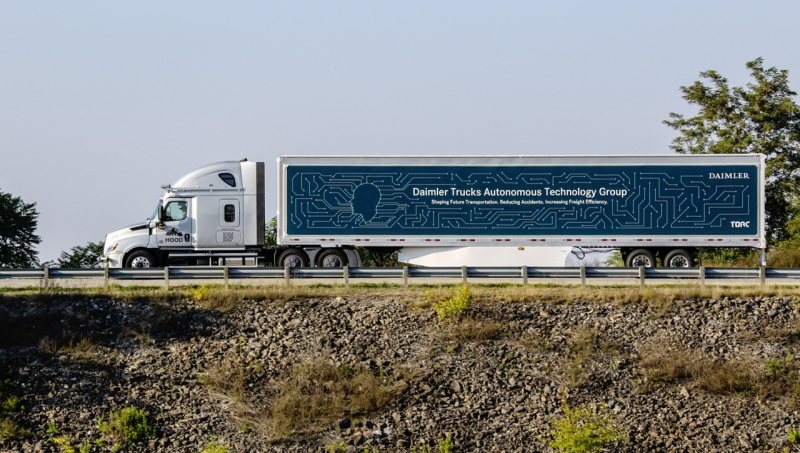Daimler Trucks and Torc Robotics, partners in Daimler Trucks’ Autonomous Technology Group will soon expand testing of automated truck technology to new public routes in the US.
The team completed initial mapping of additional routes in January. These public road testing efforts allow the teams to collect data from real-world traffic scenarios beyond what can be learned from computer simulations and closed road courses.
Initial public road testing started in southwest Virginia last year, where Torc is headquartered. The supportive state and local governments, combined with the well-developed infrastructure and highway systems allow the teams rigorously to test, to develop and to deploy the automated system.
The Autonomous Technology Group will continue to test the next generation of automated driving software in Virginia and will add the upcoming new routes to the data collecting. This extensive testing is part of Daimler Trucks’ and Torc’s comprehensive validation approach to bring safe highly automated trucks to the road.
The expansion of road-testing in the US is part of the Group’s continuing real-world application and collaboration with drivers, regulatory affairs and community stakeholders to ensure the common goal of building trust towards improving road safety and efficiencies in transportation.
Daimler Trucks has dozens of years of experience in testing and validating the durability, reliability and safety of commercial vehicles around the world. With Active Drive Assist (Mercedes-Benz Actros, FUSO Super Great) and Detroit Assurance 5.0 with Active Lane Assist (Freightliner Cascadia), Daimler Trucks has brought partially automated driving features into series production. In 2019, Freightliner, the North America market share leader, unveiled the first SAE Level 2 automated truck, the Freightliner Cascadia.
Similarly, Torc’s “Asimov” autonomous driving system has been tested on public roads with zero accidents, including a cross-country journey. In joining their extensive testing experience, Daimler Trucks and Torc have developed a comprehensive validation approach and safety protocols for automated driving and are completely aligned with the federal framework policy for testing and commercial deployment of SAE Level 4 automated trucks.
All automated runs require both an engineer overseeing the system and a highly trained safety driver certified by Daimler Trucks and Torc. All safety drivers hold commercial driver’s licenses and are specially trained in vehicle dynamics and automated systems.
Following the investment announcement in automated driving at the beginning of last year, Daimler Trucks established the Autonomous Technology Group in June 2019. Together with Torc, Daimler Trucks’ global organization for automated truck driving brings together its worldwide experience and expertise.
The Group takes responsibility for the overall strategy and implementation of the automated driving roadmap, including research and development, testing and validation and setting up the required operations infrastructure and network with the ultimate vision of series production of highly automated trucks (SAE level 4) within the decade. The Autonomous Technology Group has a global reach with experts working in various locations throughout the company’s worldwide development network located in Portland and Blacksburg in the U.S. and in Stuttgart, Germany.
Based in Blacksburg, Virginia, Torc became part of the Autonomous Technology Group in August 2019, following Daimler Trucks’ investment in the company. By offering advanced, road-ready technology, plus years of experience in heavy vehicles, Torc has grown into a global industry leader in the field of automated driving. Torc’s SAE Level 4 virtual driver system “Asimov” has been integrated and tested successfully in multiples applications running on public roads from urban to long-distance highway routes as well as in rain, snow, fog and varying light conditions.
As part of this research and development, Portland-based Daimler Trucks North America (DTNA) is refining a truck chassis that is perfectly suited for highly automated driving as well as the redundancy of systems needed to achieve safe, reliable driving. As part of the Autonomous Technology Group, DTNA is also researching the infrastructure required for the operational testing of initial application cases. DTNA is contributing to the successful development of automated driving technology and vehicle integration for heavy-duty trucks.
Original Article: https://www.greencarcongress.com/2020/02/20200219-daimlertorc.html





